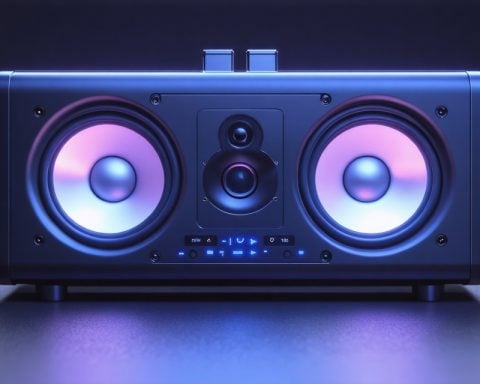A Revolutionary Leap in Aviation: The Alia Electric Plane
A striking new aircraft, the Alia, has emerged from Beta Technologies, showcasing a unique design that merges features of drones, helicopters, and boats. This sleek plane, reminiscent of futuristic concepts, is generating excitement in the aviation world.
With Air New Zealand marking its territory in sustainable aviation, the airline has made history as the first to acquire the Alia. Slated for operation in about 18 months, this electric marvel boasts an impressive range of up to 400 kilometers and can reach speeds around 250 kilometers per hour. The initiative comes as the airline seeks to enhance its sustainability amid increasing global emissions from aviation.
A promising use for the Alia includes mail delivery services in partnership with NZ Post, drastically reducing transport time from three hours to approximately 35 minutes across the Cook Strait.
Former professional athlete Kyle Clark, the mastermind behind Beta Technologies, explains that the Alia was initially inspired by the need for eco-friendly transport of donated organs between hospitals. This innovative aircraft is not merely a one-trick pony; it can also be configured to transport up to nine passengers, with future plans to expand capacity even further.
While challenges like battery life persist, advancements are on the horizon. With electric flight becoming a reality, the Alia signifies an exciting potential shift in air travel, making aviation more sustainable and accessible.
Alia Electric Plane: Pioneering the Future of Sustainable Aviation
A Revolutionary Leap in Aviation: The Alia Electric Plane
The Alia, a groundbreaking electric aircraft developed by Beta Technologies, is reshaping the aviation landscape with its innovative design that integrates elements from drones, helicopters, and boats. As a symbol of the future in sustainable flying, this aircraft is generating significant interest among aviation enthusiasts and industry professionals alike.
Key Features of the Alia Electric Plane
1. Impressive Range and Speed: The Alia is capable of covering distances of up to 400 kilometers at a cruising speed of approximately 250 kilometers per hour. This makes it suitable for various applications, from passenger transport to freight services.
2. Capacity Configurations: The aircraft is versatile, designed to transport up to nine passengers. Plans to increase passenger capacity in future models indicate a commitment to meeting diverse transportation needs.
3. Pioneering Initiatives: In a historic move for sustainable aviation, Air New Zealand has become the first airline to acquire the Alia, aiming to incorporate the aircraft into their operations within the next 18 months. This partnership emphasizes a shared goal of reducing carbon footprints and embracing eco-friendly technologies.
4. Dedicated Use Cases: One notable application for the Alia is its intended role in mail delivery services, particularly in a collaboration with NZ Post. This service promises to cut delivery times across the Cook Strait from three hours to just 35 minutes, highlighting the aircraft’s efficiency in logistics.
Limitations and Challenges
While the Alia presents a promising advancement in electric aviation, challenges remain, particularly concerning battery life. The ongoing development of battery technology will play a critical role in optimizing the aircraft’s performance for longer distances and heavier loads.
Trends and Insights in Electric Aviation
1. Market Analysis: The push for sustainable aviation solutions is not just a trend; it is becoming imperative due to rising global emissions. The Alia represents a broader movement within the aviation sector towards electric flight, with multiple startups and established companies venturing into this space.
2. Innovations in Design: The unique hybrid design of the Alia allows for applications that traditional aircraft cannot fulfill, opening up new markets and opportunities in transportation.
3. Environmental Impact: The introduction of electric airplanes like the Alia is expected to have a significant positive impact on reducing greenhouse gas emissions within the aviation industry.
Future Predictions
Looking ahead, the integration of electric aircraft into commercial aviation could lead to a substantial transformation in how we perceive air travel. Innovations like the Alia may pave the way for urban air mobility solutions and more sustainable travel options, aligning with global mandates for reducing carbon footprints.
As the technology matures, we anticipate seeing more airlines adopt electric aircraft, which could revolutionize air travel and redefine sustainability in the industry.
For more on sustainable aviation trends and innovations, visit Beta Technologies.













